If there’s one topic that’s guaranteed to get the climbing community hot and bothered, it’s the number 9 followed by the letter C. Even in 2023, the elusive 9c climbing grade is still a highly coveted prize, with very few people even possessing the ability to send the hardest climbing grade ever established.
While clipping the chains on such a line would be a life-changing achievement for any climber, merely attempting a route of this magnitude not only requires superhuman strength but also bucketloads of bravery, mostly for facing the onslaught of critiquing that will inevitably follow such an ascent.
Fortunately for climbing fans, climbing 9c – and grades beyond this (we believe in you, Theo Blass), – are certainly not beyond human capability. To date, there are two climbers, and two routes, that have managed to enter the realm of 9c climbing. Undoubtedly as the world of climbing training continues to develop, with better gyms, coaches, science, and technology, plenty more men, women (and most likely) children will continue to push the boundaries of the sport.
For now, though, let’s marvel at the hardest sport climbing grade ever achieved: 9c. Read on for a deep dive into the world of 9c climbing including; the 9c routes, climbers, and how to test if you have what it takes to climb the hardest grade (I wouldn’t get your hopes up, though).
How Many 9c Routes Are There?
Even to propose that a climb at 9c difficulty requires courage, self-belief, and bucketloads of experience. There There are four climbers who have proposed this grade, but only three of these have stood the test of time.
Thanks to Adam Ondra, Seb Bouin and more recently, Jakob Schubert there are three 9c’s out there. All three climbers, each one in his own unique way, are a great example of how this grade can be achieved. The relentless training, inspiring dedication, and unbelievable pure strength are just some of the traits required to climb to the next level.
While climbing 9c is undoubtedly a monumental achievement, it’s also a pretty controversial grade. The story of these routes and this grade are an ongoing journey, written with time and repeats made by other climbers.
The Lines and The Climbers – From Norway to France
Silence
First Ascent: Adam Ondra, September 2017
Ok, let’s cut to the chase. let’s get psyched by those unbelievable lines and 9c climbers.
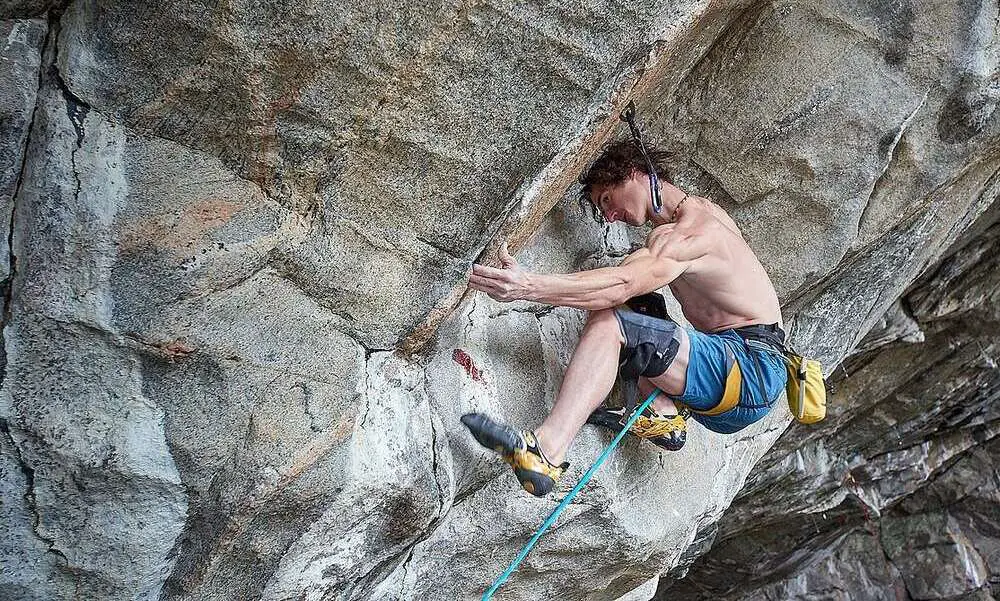
Bolted back in 2012-13, Ondra dubbed the route ‘Project Hard’ although it would later become globally recognized as Silence. This 148ft overhanging masterpiece in the cave of Flatangar, Norway, requires much more than technique or strength. It required Ondra’s imagination, creativity, and focused training. Some of the craziest climbing moves in the world were established, looking heinously painful just to watch. The journey towards the send was truly an inspiring one.
After spending 40 days trying the route and 7 visits to the cave – Ondra sent the line on September 3rd, 2017, suggesting cautiously, of course, the world’s first 9c. The climbing world was fascinated by the efforts and the aesthetic of this futuristic line.
Even now, the line is still waiting for a second ascent. Stefano Ghisolfi, the super-strong Italian climber, had started trying it over the 2022 season. Having made some progress on the route, it’s a waiting game to see if he can achieve the second ascent.
DNA
First Ascent: Seb Bouin, April 2022
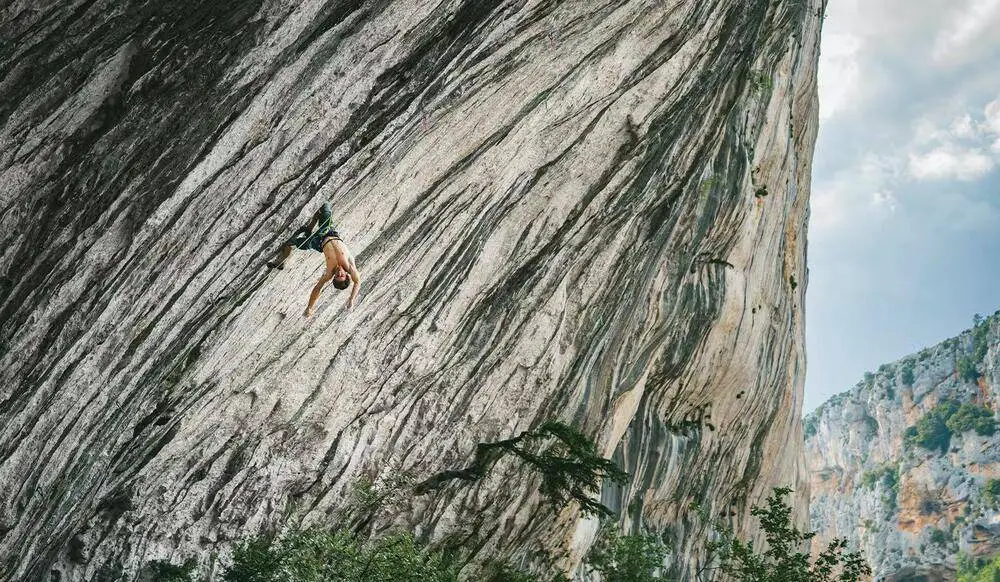
Bolted in 2019 in La Ramirole, France, this mega-steep line was always an inspiring one by Seb Bouin. Going through non-stop boulder-problem cruxes, huge endurance sections of tufas, crimps, and well… a lot of climbing. Bouin himself tried the route more than 250 times until the send in April 2022. The grade proposal originated from the process and the efforts the French climber had to put into it. Having numerous first ascents of hard lines, as well as ascents of some of the world’s hardest ones, Bouin decided to propose the mystic 9c, claiming ‘it’s the next step’, and inviting other climbers to try it.
So far, the line hasn’t seen any repeats, but Jakob Schubert recently took a trip to La Ramirole to check out DNA and try some moves. Hopefully, it’s a matter of time before Jakob or someone else makes the second ascent of this iconic route. The line is for sure a unique one, giving us all a reason to stay curious and follow its story of becoming a historical one.
B.I.G
First Ascent: Jakob Schubert, September 2023
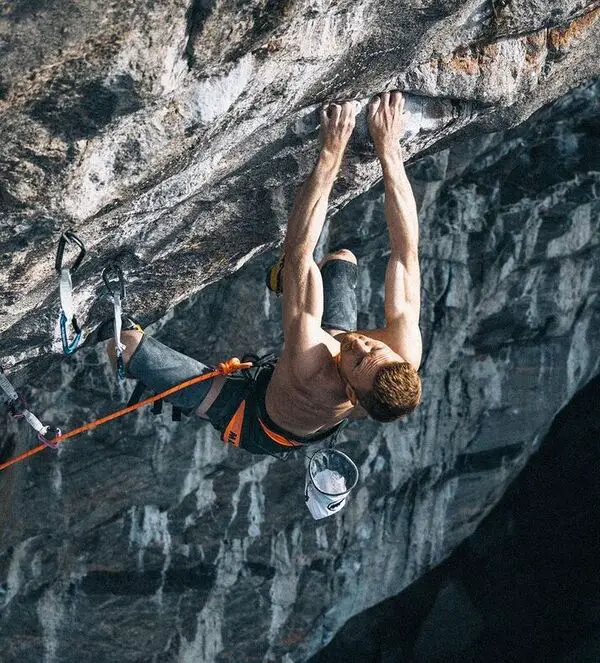
Dubbed Project Big, this route is the king line of the Flatanger cave which has been Adam Ondra’s playground for years. First bolted by Ondra, the pair began testing themselves on the route in 2022. Initially, they both saw it as a 9b+ since they managed to figure out the beta within two weeks of working the route. Adam and Jakob sensed they were close.
It wasn’t until they got to the crux section that things started to get a little bit tricky. Progress slowed down and they realised maybe this route is a lot harder than they thought. Jakob had Perfecto Mundo as his benchmark and B.I.G felt a lot harder than that.
When reflecting on the grade, Jakob wrote on his Crag account, ”B.I.G. feels so strange to grade because it really doesn’t feel that bad if you try just the moves. The crux is a [V12] boulder problem, and by now I have it dialed so well that I can do it easily, even multiple times in a row. But because of the very powerful style of the boulder it’s way more difficult to do it after 80+ moves of climbing.”
The conditions on the day he made the first ascend were far from ideal. Wet, cold and slippery, Jakob pushed through the physical and mental barrier, clipping the chains on his hardest route to date. If there was anyone I would bet good money on climbing the next 9c, it was definitely Jakob.
Why Is 9c So Rare?
In a world where climbers like Adam Ondra, Stefano Ghisolfi, Jakob Schubert, and Alex Megos can hike up 8c like it’s part of their morning routine, you may be wondering why we haven’t seen more pros gunning for these coveted 5.15d routes.
The problem is, grading a climb at the highest end of what’s currently possible is no easy feat. Could a 9b actually be a 9c? Could a 9c actually be a 9b? Could a 9b+ be a 9c+?
Confused? Good, because that’s exactly how the world’s hardest climbs work. Up until a few years ago, climbing any route graded 9 was still a rare achievement. While climbers try harder and harder, proposing the next grade is… well, not easy. I guess, as a climber, you want to be certain that what you just climbed is hard enough.
Even we weekend warriors suffer from this grading dilemma. When I climb a new 7a route I’m immediately suggesting a 6c. I don’t know why, but that’s how we do it, we instantly forget about all the painstaking effort we went through to get there.
This is how 9 grades got their own galaxy, their own dignity, their own prestige. Climbing legends have kept pushing the limits, from Wolfgang Gulich to Chris Sharma, yet it’s important to mention that ever since the first 9a was climbed (Action Directe in 1991), the process of reaching the 9c grade was, well, slow. The world’s hardest lines stayed 9b+, while the strongest and best climbers in the world were aspiring to send more of these lines.
The Route That Used to Be a 9c…
Bibliographie
First Ascent: Alexander Megos, August 2020
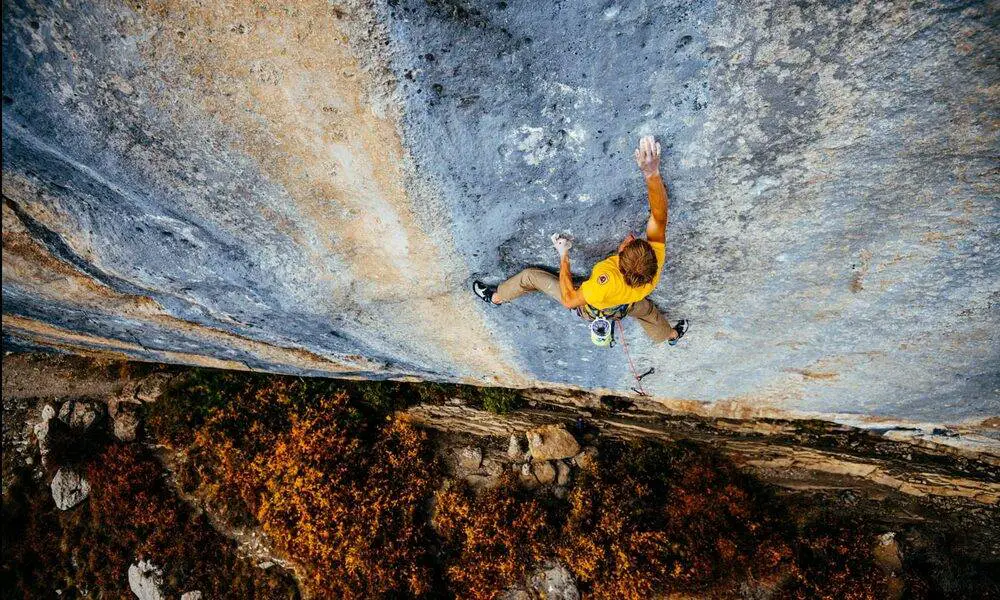
Alex Megos proposed the grade for his beautiful project, ‘Bibliographie’, but after seeing some sends by other incredible climbers, the route was suggested to be more of a 9b+.
This story perfectly reflects how complicated this ‘next grade’ phenomenon is. Digging deep into this topic would require a master’s in psychology and a bunch of other analytic skills. You can have the perfect technique, and you can climb all the hardest lines in the world, but still have a hard time grading your projects.
Why is that? Social media stress, self-doubt, but beyond all of these – climbing is different from one person to another. Strong on pockets, good on crimps, super flexible, and more… Recently, professional climbers are often avoiding proposing a grade, but more reflecting on the general difficulty of the route.
While writing these words, I stumbled upon an Instagram post by Jorge Diaz-Rullo, a Spanish climber that has done more than 60 routes graded 9, and just did his first FA 9b+. His Instagram post relates perfectly to the grade discussion (yeah, it’s not a 9c, but you get the point): “I’m not exactly sure what’s required to make that step between 9b to 9b+, but if I’m really honest, I should propose 9b+”.
You Got What It Takes? The 9c Climbing Test
How strong do you have to be to climb 9c? Ridiculously strong is the answer. But finger strength alone isn’t enough to get you there, you also need to have the perfect technique, the endurance, the mind-game, the creativity, the passion, and probably be something like Superman, only better.
But, how cool would it be to try and check if you got the strength required? Luckily for us, passionate climbers around the world, we got a test! Don’t worry, the test is not only for 9c climbing, but should determine how hard you are able to climb. Magnus Midtbo gave it a go to get us motivated, so watch it and get psyched.
It’s a mix of max finger strength, pull-ups, hangs, and endurance. Ready for it? Take the test here!
Keep yourself healthy, don’t get injured, and don’t take the test if you’re not sure about it.
9c – The History Goes On…
It’s 2023. One year ago, there was only one established 9c in the world (Silence), by a single climber. One year later, we had two lines, by two climbers. Now, there are three! As talented climbers try harder and harder, we can just imagine what I will write about one year from now. I’m excited to see what this year turns out like!
9c Climbing FAQs



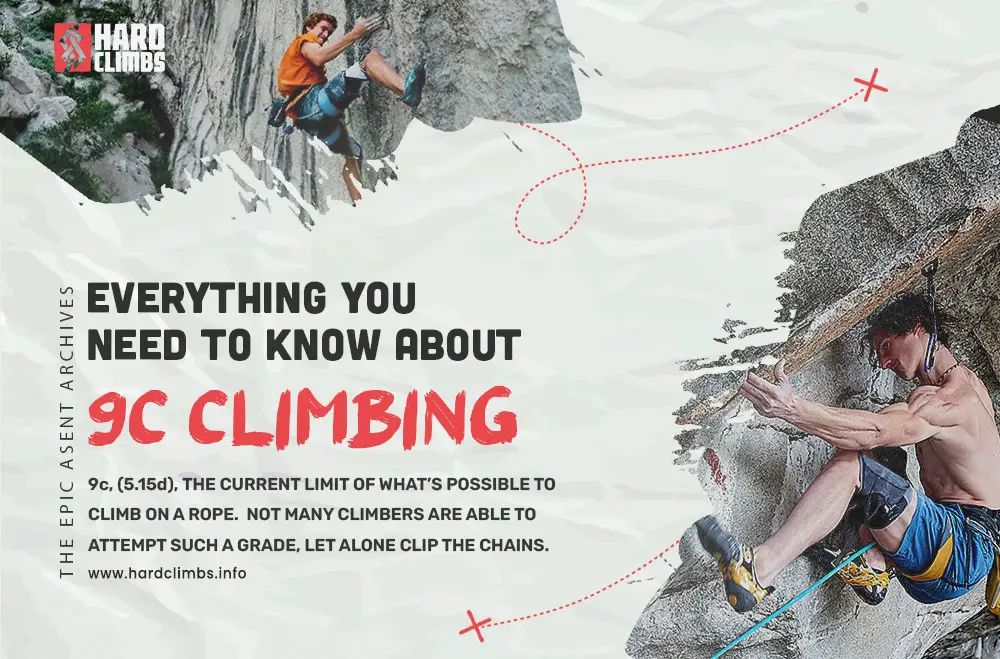
Hey ! Just read the article and wanted to point out 2 possible mistakes/typos:
“And that’s how, I guess, we have ‘only’ two 9c’s (so far) to marvel over.”
Should read “three 9c’s”
“Yes, currently there are three routes that are graded 9c; Silenc, DNA and B.I.G.”
Should read “Silence”
Hey Jonathan, thanks for pointing those out mate! I have made the edits 🙂
By now (October 2024) those 3 routes have only a proposed grade of 9c, so perhaps it’s better to say that those have a proposed 9c grade than saying they are 9c graded.
When an additional climber sends the route and agrees the proposed grade then that route is considered “graded” because of consensus, before that we only have a proposition.
So as today no route has been “graded” 9c, but we have 3 propositions.